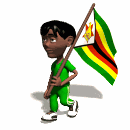The Stellenbosch, Paarl and Franschhoek valleys form the Cape Wine-lands,
the larger of the two main wine growing regions in South Africa. The
South African wine industry produces about 1,000,000,000 litres of wine
annually. Stellenbosch is the primary location for viticulture and
viticulture research. Professor Perold was the first Professor of Viticulture at Stellenbosch University. The Stellenbosch wine route,
established in 1971 by Frans Malan from Simonsig, Spatz Sperling from
Delheim and Neil Joubert from Spier is a world renowned and popular tourist destination.
The region has a Mediterranean climate
with hot dry summers and cool wet winters. Stellenbosch lies at the
foot of the Cape Fold mountain range, which provides soil favourable to viticulture. Grapes grown in this area are mainly used for wine production, as opposed to table grapes. The region possesses a wide range of soils in the area, from light, sandy soils to decomposed granite. Stellenbosch Cabernet Sauvignon is beginning to get a good reputation as a fine wine.
History:
Stone tools dating to the Paleolithic Era have been found at Stellenbosch, first described by Louis Péringuey
in 1899. Originally, the artifacts were considered the type case for
the type of tools known as "Stellenbosch complex", but are now
considered to be representative of the Acheulean Industry.
The town was founded in 1679 by the Governor of the Cape Colony, Simon van der Stel, who named it after himself
— Stellenbosch means "(van der) Stel's Bush". It is situated on the
banks of the Eerste Rivier ("First River"), so named as it was the first
new river he reached and followed when he went on an expedition over
the Cape Flats to explore the territory towards what is now known as
Stellenbosch. The town grew so quickly that it became an independent
local authority in 1682 and the seat of a magistrate with jurisdiction over 25,000 square kilometers (9,700 sq mi) in 1685.
The Dutch
were skilled in hydraulic engineering and they devised a system of
furrows to direct water from the Eerste Rivier in the vicinity of
Thibault Street through the town along van Riebeeck Street to Mill
Street where a mill was erected. Early visitors commented on the oak trees and gardens.
During 1690 some Huguenot refugees settled in Stellenbosch, grapes were planted in the fertile valleys around Stellenbosch and soon it became the center of the South African wine industry.
In 1710 a fire destroyed most of the town, including the first
church, all the Company property and twelve houses. Only two or three
houses were left standing.
When the church was rebuilt in 1723 it was located on what was then the
outskirts of the town, to prevent any similar incident from destroying
it again. This church was enlarged a number of times since 1723 and is
currently known as the "Moederkerk" (Mother Church).
The first school had been opened in 1683 but education in the town
began in earnest in 1859 with the opening of a seminary for the Dutch
Reformed Church. Rhenish Girls' High School, established in 1860, is the oldest school for girls in South Africa. A gymnasium which was known as het Stellenbossche Gymnasium was established in 1866. In 1874 some higher classes became Victoria College and then in 1918 University of Stellenbosch.
The first men's hostel to be established in Stellenbosch was Wilgenhof,
in 1903. In 1905 the first women's hostel to be established in
Stellenbosch was Harmonie. Harmonie and Wilgenhof were part of the Victoria College. In 1909 an old boy of the school, Paul Roos, captain of the first national rugby team to be called the Springboks,
was invited to become the sixth rector of the school. He remained
rector till 1940. On his retirement the school's name was changed to Paul Roos Gymnasium.
In the early days of the Second Boer War
(1899–1902) Stellenbosch was one of the British military bases, and was
used as a 'remount' camp; and in consequence of officers who had not
distinguished themselves at the front being sent back to it, the
expression 'to be Stellenbosched' came into use; so much so, that in
similar cases officers were spoken of as 'Stellenbosched' even if they
were sent to some other place.
Labels: biltong, biltong recipe, biltong UK, biltonguk, boerewors, chillibites, chillibitesuk, chilliebites UK, cream soda, Mazoe cream soda, mealiemeal, Oumas Rusks, pap, recipes, sadza, South Africa

















